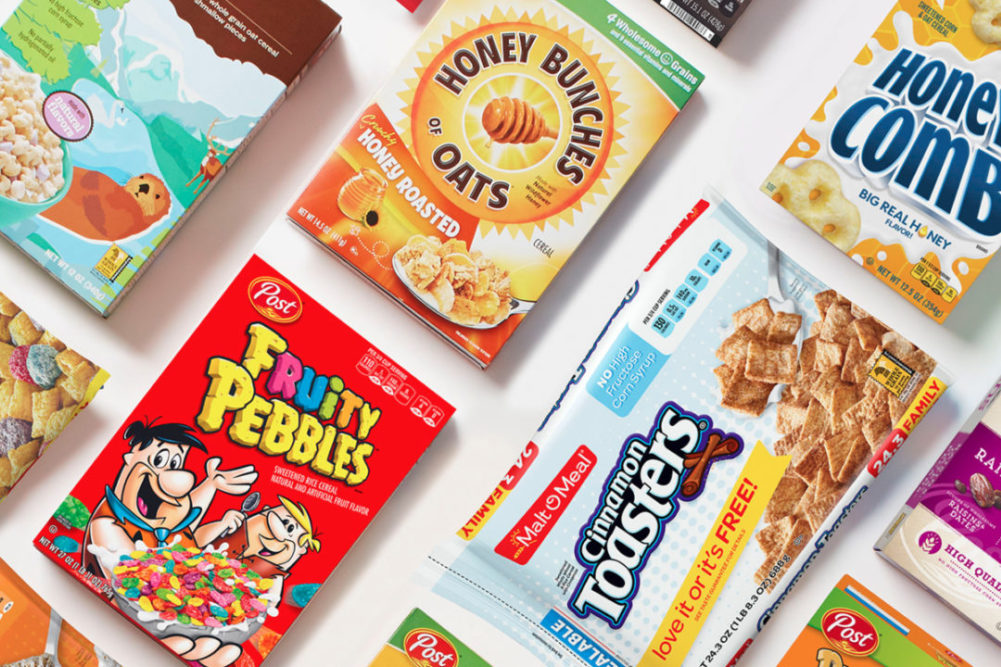ST. LOUIS – Rising costs and manufacturing capacity constraints limited Post Holdings Inc. in fiscal 2021. The company reported positive results for the year, but executives recognized results could have been better.
Looking ahead, management issued an optimistic outlook for fiscal 2022 with the view that inflation and many of the supply chain issues that plagued the company during fiscal 2021 will ease.
Net income for the period ended Sept. 30 was $167 million, equal to $2.42 per share on the common stock, and an improvement of over fiscal 2021 when the company earned $800,000, equal to 1¢ per share.
Sales for the year were $6.2 billion, up from $5.7 billion in fiscal 2020.
“Sales were largely in line with our expectations,” said Robert V. Vitale, president and chief executive officer, during a Nov. 19 conference call with securities analysts. “The miss was entirely the result of cost escalation. The two biggest drivers versus expectations were unfavorable manufacturing costs of nearly $18 million, resulting from plant inefficiencies and poor fixed cost absorption and transportation costs, which were $12 million above forecast.
“In addition, capacity constraints, largely resulting from labor and material shortages and contract manufacturing under shipments, inhibited our ability to service demand. The capacity limitation resulted in customer allocation across Foodservice, Refrigerated Retail and BellRing (Brands).”
But stepping back from the supply chain issues, Mr. Vitale said there was cause for optimism with demand strong for Post and Weetabix cereals, Bob Evans products and in most foodservice categories.
“Our Post-branded cereals performed well this year, gaining 0.5 a share point on the strength of the Pebbles franchise,” he said. “This was offset by weakness in our value portfolio. We expect consumers to return to value price points as consumer liquidity normalizes.
“Weetabix had a modest share gain this year lifted by innovation. Compared to two years ago, however, the business has gained 1.5 share points. Our Bob Evans brand continues to gain new households with penetration up 3% over the prior year. This gain was achieved despite capacity constraints and out of stocks limiting its growth.”
Post Consumer Brands, the company’s largest business unit, had sales of $1.9 billion, up 2% over the prior year. Segment profit fell 20% to $317 million. It was negatively impacted by a $15 million legal settlement, according to the company.
Foodservice sales rebounded strongly during the year, rising 19% and coming in at $1.6 billion. Segment profit rose 141% to $62 million. Mr. Vitale said Foodservice results should have been better.
“We should have sold more than we did,” he said. “The specific customers that order our highest value products are doing quite well, and demand is very strong.”
The company has 22 lines available to manufacture foodservice products, but was only able to operate 18, because of labor shortages.
“We expect that to change throughout the year,” he said. “We expect to be at 19 by the third quarter and then full utilization of lines by the end of the year. But the single source of the gap between what you would expect looking at our customers and what we were able to ship is labor availability crimping our capacity.”
Refrigerated Retail sales were $975 million, up 1.4%. Business unit profit fell 40% to $76 million. Volatility in the market for hogs impacted results.
Post’s Weetabix unit had sales of $478 million during the year, up 8% over fiscal 2020. Segment profit rose 3% to $115 million.
Mr. Vitale said he expects adjusted EBITDA to be between $1.2 billion and $1.6 billion in fiscal 2022, or a growth rate of 3% to 7%.
“Two key assumptions supporting this range are that by the end of our second fiscal quarter, ingredient, packaging and freight inflation will have peaked; and that labor markets will normalize,” he said. “To the extent those assumptions prove optimistic, there could be pressure on our outlook. Specifically, with respect to inflation, the risk is primarily the timing as we expect to continue to price inflation, albeit with a potential lag.”
He added that the adjusted EBITDA level for 2022 does not reflect management’s expectations of Post’s baseline earnings potential.
“There are three specific drivers,” he said. “First, we do expect some of these cost pressures and capacity constraints to continue during the first half, easing throughout the fiscal year as pricing laps cost increases and supply chains normalize. Second, we continue to expect the full profit recovery in Foodservice will not occur until fiscal 2023. And finally, synergy realization of prior year acquisitions will largely occur in fiscal '22, with 2023 being its first full year in the P&L.”






